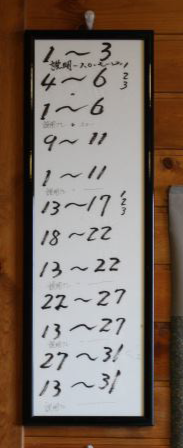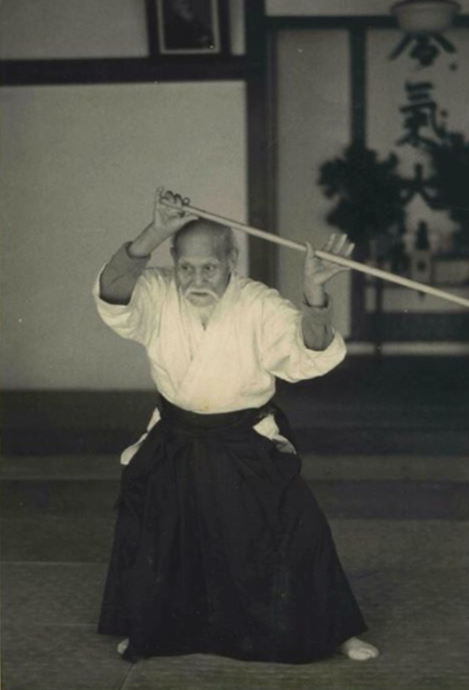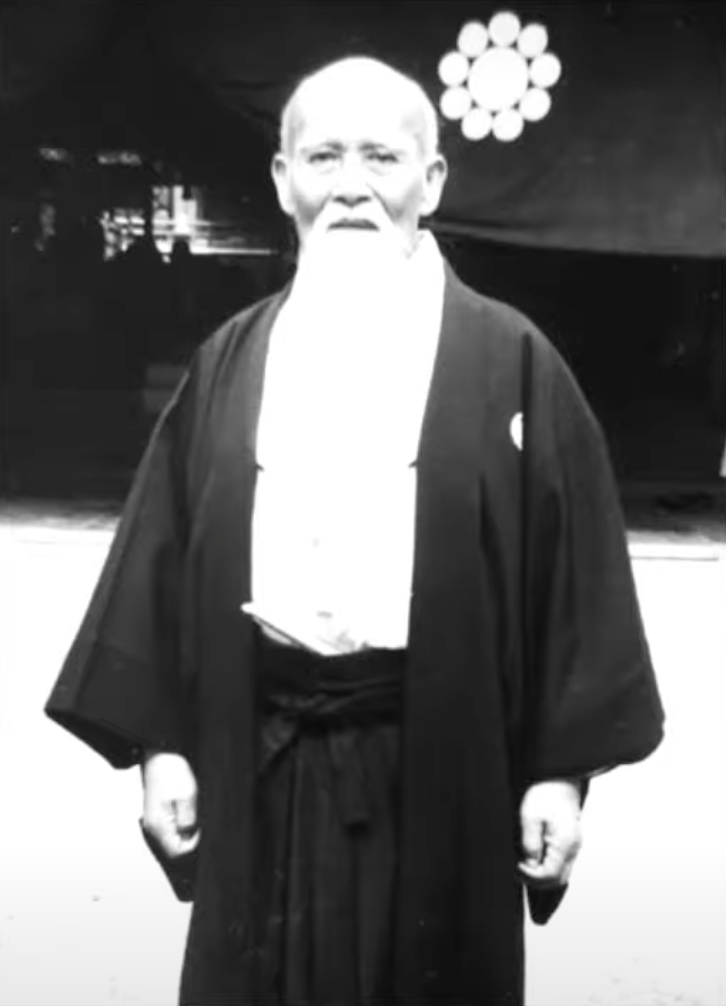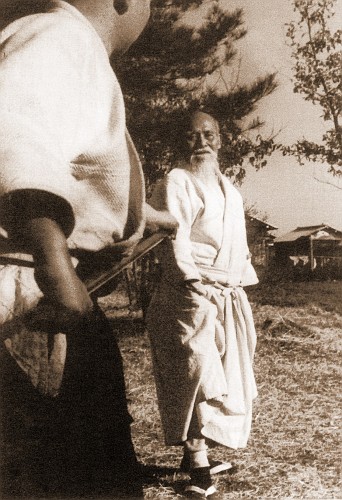This article, with accompanying video of Morihiro Saito Sensei, is to help those who are currently learning the 31 Jo Kata. There will be updates to include the Kumi-Jo at a later stage. Also included is a part transcript of the words of Saito Sensei which provide a background to the development of the 31 Jo Kata, as well as some important aspects of the kata which must be kept in mind.
This form of the 31 jo kata was taught in Iwama by the founder of Aikido after World War 2. It showcases a wide variety of attack and defensive movements with the Jo. The 31 kumi jo are paired jo movements which show the applications of the kata movements with a partner. Of course before learning the kumi jo sequences it is vital to know the kata thoroughly. Please pay carful attention to the movements of Saito Sensei. Once you are familiar with the kata, careful attention must be paid to the detailed footwork so as to begin and end the kata in the same position.
“The 31 movement jo kata has been preserved exactly as the Founder taught it. Since the content of the kata was quite difficult, we would practice it in the form of 31 movements. Little be little, without our realising it, the movements evolved into the 31 movement jo kata.”
“One important point to keep in mind is that in the kata you begin and end in exactly the same position. Thus there are some differences compared to the Kumi Jo or paired Jo movements.”
To assist with learning how to perform the kata beginning and ending in the same position, I found it useful to mark certain counts where the foot position is in (or very near) the start position. These are noted here: 10, 12, 18, and 26. Please note this was an aid to my own learning to check that I was on the right track!
“In order to learn the kata we have broken it down into component parts. There are some places where these movements differ when applied in the Kumi-Jo. For example, 15/16, 20/21, 25 and 26. The two movements become one.”

This comment regarding how the kata is broken down into component parts become clear when learning the kumi-jo. This photo (again from the dojo of Dr. Paolo Corallini Sensei, and written by Saito Sensei) shows this break down and can be very useful when learning the kata.
“O’Sensei disliked the 1-2-3 approach to training. “There is no such thing as 1-2-3 practice in the martial arts,” he would say. However, this approach is the only one which will work when training with a large number of people. That was the reason for the development of the 31 movement kata. The kumi jo are different. Please keep this distinction in mind.”





Comments